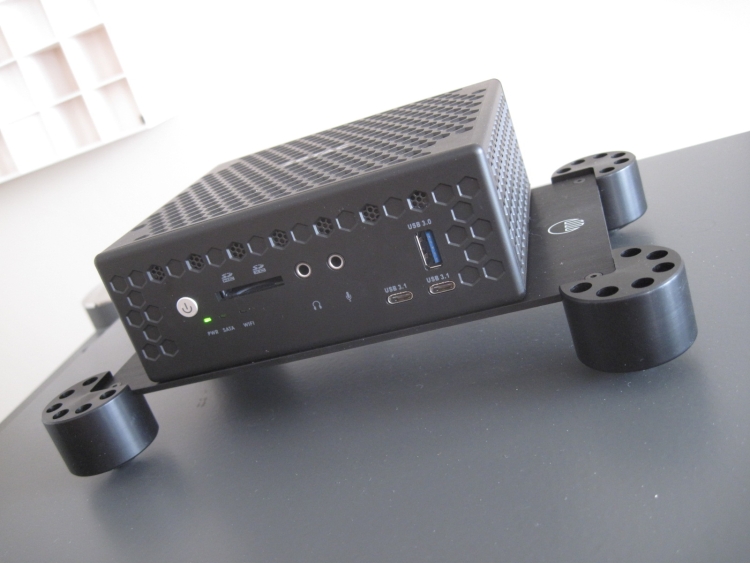
Futuristic looking highly versatile Music Server with superb sound quality
Review sample kindly supplied by Euphony Audio
Retail prices in the Netherlands:
Euphony Buggy/Zotac 500GB – 1.399 euro
Euphony Buggy/Zotac 1TB – 1.699 euro
Euphony Buggy/Zotac 2TB – 1.999 euro
Optional Keces linear power supply DC116 – 300 euro
Optional Keces linear power supply P8 dual output – 700 euro
Optional Keces linear power supply P8 single output – price TBC
When I reviewed the Euphony Drive not too long ago, Audiokernel, the company behind Euphony, were already working on a turn key Music Server product. I was eager to review it then but it was not ready for production just yet. As such the Euphony Drive functioned as sort of a starter dish for the main course that is now served. Besides functioning as a starter dish, having installed the Euphony Drive in AudioAanZee Reference Flow, a long standing favorite music server, it became very clear that it is not only the hardware that makes the sound, but also to a very large extent, the software. As you can read in the original Euphony Review, this OS swap alone (although HDD to SSD) made for a very large difference, bringing the server much closer in performance to the benchmark setting Aurender N10.
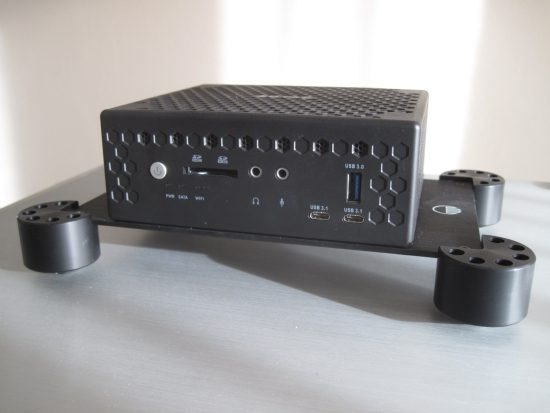
Functionality
Now, what makes a Buggy/Zotac? The hardware is a Zotac CI523 Nano, based around an Intel Core i3-6100U dual core 2.3 GHz processor. What makes it tick of course, is the SSD with proprietary software. This is formed by the amazing Euphony Audio Transport software which is installed on a SSD. Please read the original review for an extended explanation but in short this is not run off the mill standard software, freeware or otherwise. It is highly customised code that not only sounds absolutely fantastic, but also gives the user the option to choose between 4 different server/endpoint audio systems at the tap of a button, within seconds.
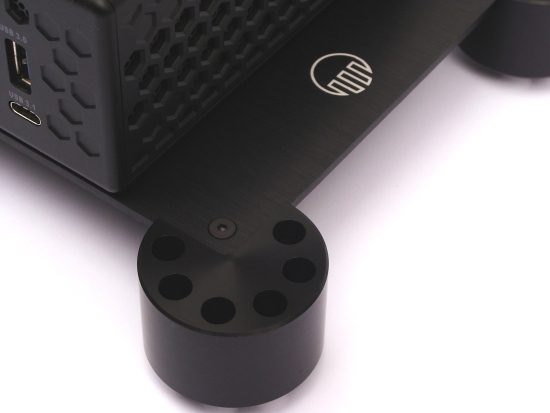
The feet are milled from aluminium and they contain holes that actually aid in dissipating the warmth generated by the Zotac.
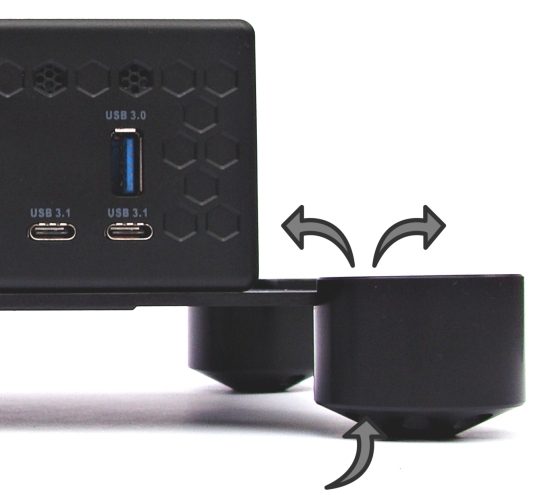
Euphony Audio Transport provides a highly tuned, minimalistic operating system with bit perfect sound no matter which solution you choose. By going to an easy to navigate web page you can select between MPD, Roon, HQPlayer and SqueezeLite.
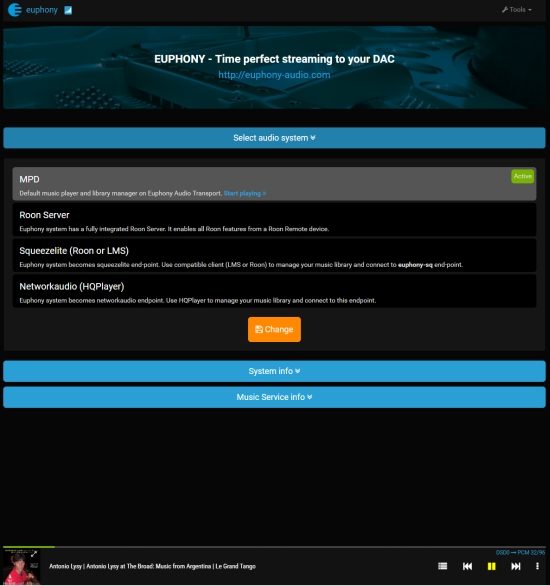
All functionality can be accessed via a web interface and this works smoothly, intuitively and best of all: lightning fast! Switching from MPD to RoonServer for example requires going to the Audio System section, selecting RoonServer and clicking the Change button. With Roon’s Audio Setup section active in the background I clicked the button and the system indicated that it was rebooting. I swear maybe 2 seconds passed before the interface already indicated that Roon was now active and Roon immediately showed the Buggy/Zotac as a newly available endpoint. This kind of seamless software integration really makes me smile.
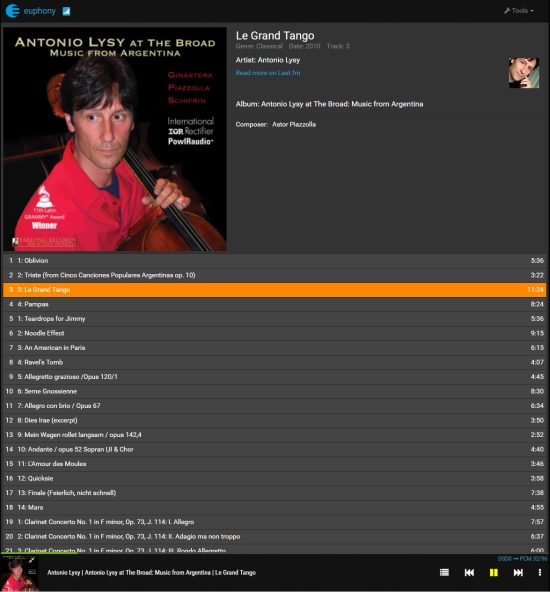
MPD is the default which can be controlled with any app that controls the Music Player Daemon such as mPad, but can also be controlled via the much slicker web interface from Tablet, Windows or Mac, where you can also select very many options. In this mode the unit functions as a server with integrated player. Music can be uploaded to the unit’s internal drive, or connected via a network share. The Euphony guys tell me that the soundquality when streaming from a share should be identical to local playback when using the maximum buffer setting but I have not tried this.
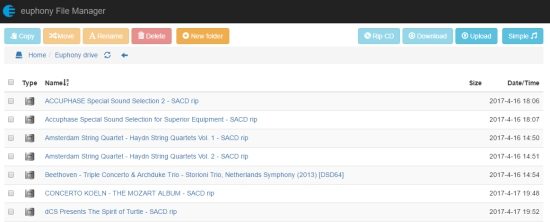
Music can be added from a connected computer using any web browser and the integrated easy to use File Manager as shown above, or dropped directly via SMB share.
Roon Server by now probably speaks for itself. If you’re new to Roon then by all means read my extensive review. It really is the new industry standard for super flexible useability as well as class leading streaming audio quality. When in this mode, the Euphony Buggy/Zotac works as a Roon Server as well as a Roon endpoint and just as with the MPD mode, music can be uploaded to the unit’s internal drive, or connected via a network share. Note that it is Roon certified meaning that music is streamed to it using the native Roon RAAT protocol, which is known (and I can testify to this!) to provide the best streaming audio sound quality available. If you do not yet have a Roon license then you will need to get one. But after that you are home free, having access to as many endpoints as you like without extra costs. Turn a Raspberry Pi into an endpoint using free Roon software, or re-use an old Squeezebox, or a Sonos box for that less important second zone, or the bedroom. The possibilities are endless.
HQPlayer is a high end streaming audio protocol which turns the Buggy/Zotac into a high quality endpoint. It requires HQPlayer software to be able to stream to it which I have to admit not having any experience with.
SqueezeLite finally is a software implementation of the Squeezebox, which makes the device function as a Squeezebox endpoint. This actually works seemlessly and really sounds great, but not as good as Roon RAAT, or presumably HQPlayer.
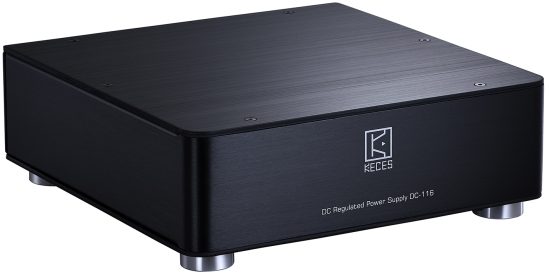
Keces DC-116 fully regulated linear power supply
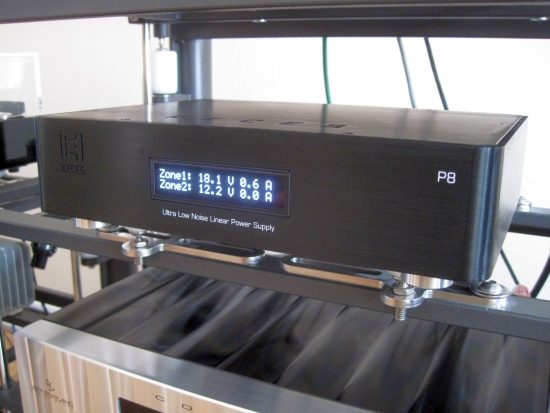
Keces P8 dual output fully regulated linear power supply (as used for this review)
The Buggy/Zotac comes with a standard switch mode power supply but as previous experiences have clearly shown, much can be achieved by using a better power supply. For this reason Euphony endorse the super high quality fully regulated linear power supplies made by Taiwan based Keces. The affordable option is the 300 euro DC-116.
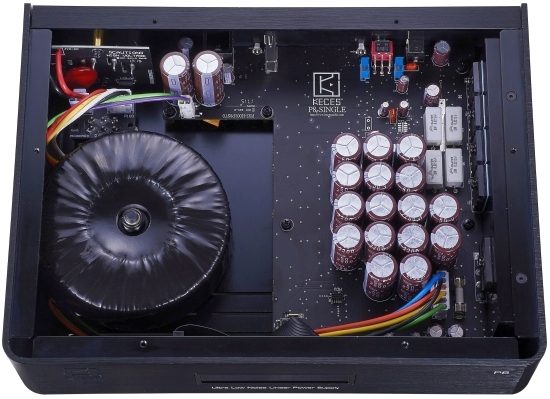
Inside the Keces P8 (Single Output) Linear Power Supply
Supplied for this review is the state of the art 700 euro dual output P8, which is so new that it is not yet on the manufacturer’s website. The P8 has two outputs with 2 switchable voltages each and a very nice front panel display that indicates voltage and current for each output. Dual outputs are not required for the Buggy/Zotac, and for this reason Keces will issue a single output P8 shortly.
The P8 is clearly manufactured to a very high standard. In use it is 100% silent: no hum, no noise, nothing. Used with the Buggy/Zotac it gets nicely warm but not hot.
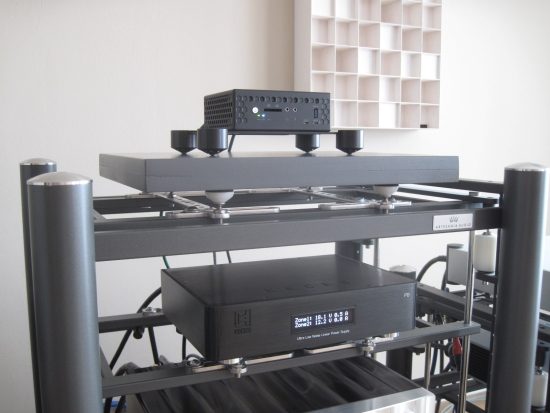
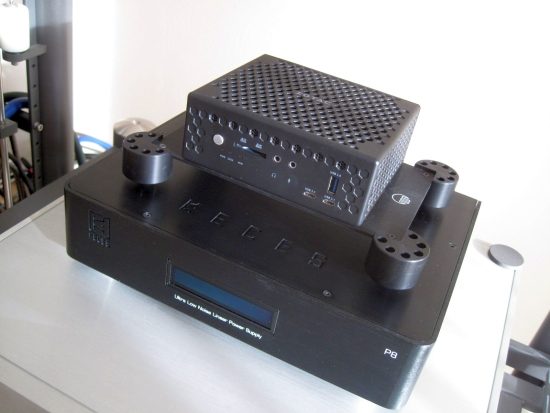
The P8 power supply is quite a bit larger and heavier than the Buggy/Zotac. This nicely demonstrates where the physical bulk is needed most: not necessarily on the computer side!
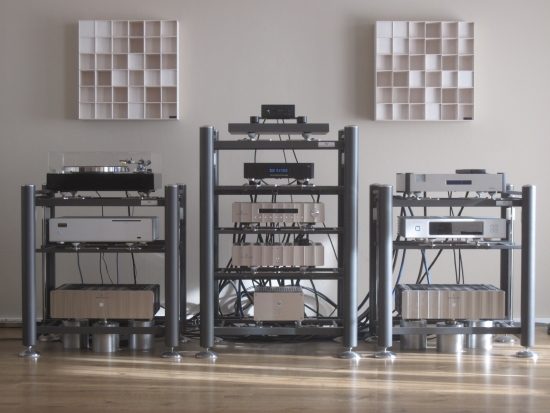
Sound – 16/44 redbook CD files
MPD via the Wadia 521 DAC
After having loaded some of my own music on the Buggy/Zotac and starting in the MPD mode, which is preferred by the manufacturer, I was ready to start listening. Although the Wadia 521 DAC does not have a USB input, it is the reference that I use in combination with the Aurender N10 music server, so this is how I wanted to kick off my experience with the Buggy/Zotac. Out came the HiFace EVO USB to spdif converter. It was instantly recognised by the Buggy/Zotac and within seconds the music played. In spite of the USB – SPDIF conversion, the server impressed me immediately. Woops… was this not more powerful in the bass than when using the Aurender? Big bass can indicate added colourations, but definitely not here. Not only was the bass more powerful, it was also more articulate and precise, and overall more dynamic than with the Aurender, which is connected to the Wadia using its own built in high quality SPDIF output. How about that?! Experience with an Apple Macbook versus a full tower Windows PC has shaped me into thinking that small computers (read small, efficient power supplies) usually also sound small. Buggy/Zotac clearly proves that this is a wrong preconception. I think that the P8 really makes the difference here, providing lots of stable power to make for that hugely confident and solid bass, while the Euphony’s inherent pure and accurate sound reproduction is accountable for the very high overall level of detailing and really outstanding definition of pitch and articulation.
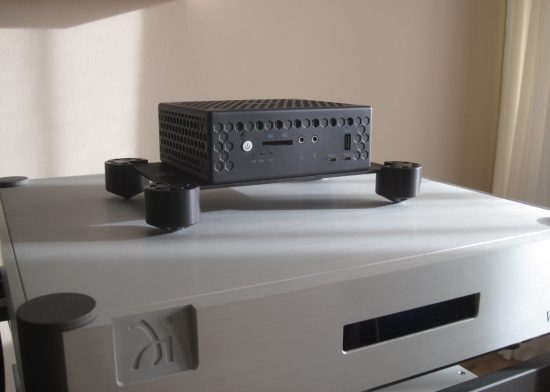
Although the Aurender offers another kind of user convenience in the shape of the very nice front panel display and transport buttons, as well as super connectivity and one of the very best iOS apps, its sound quality was the main reason for me to make it permanent part of my system. And now the very affordable Buggy/Zotac comes along cleanly beating the Aurender in one of the areas where I thought it already performed brilliantly. But bass quality aside, the N10 is not beaten per se. For instance it has a more refined, more fluid and more airy treble, whereas the Buggy/Zotac can be a little rougher around the edges. Don’t mistake this as it being harsh because it really isn’t, and it is also not a matter of leaving out any detail as the Buggy/Zotac really provides state of the art resolution. The Aurender just has a more refined character. I’m not so sure though if this makes one or the other better overall. I guess it really depends on taste and system synergy whether you prefer the more powerful, more dynamic presentation of the Buggy/Zotac or the more sophisticated, more relaxed presentation of the Aurender.
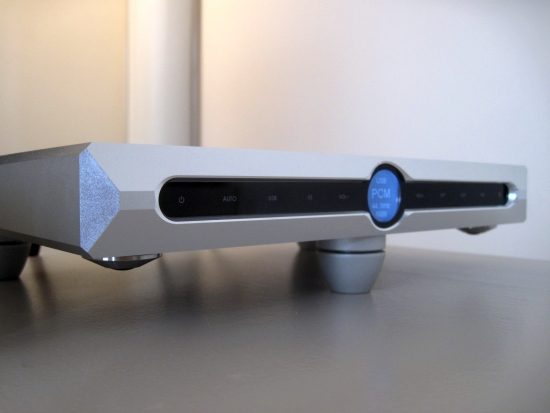
MPD via the Matrix X-Sabre Pro DAC
No doubt, the Matrix X-Sabre Pro offers incredible value for money. It’s just that in context of this group there is simply better performance to be had. To be fair though, none of these alternative DACs cost as little as the X-Sabre Pro. Its nearest rival I’d say is the Exogal Comet. However, do note that so far I am judging performance only using PCM files. Playing DSD the Matrix DAC puts in a whole different performance. For detailed information about this see the X-Sabre Pro’s extensive review and the section further below.
I feel that the Buggy/Zotac, while very affordable, definitely plays at the upper echelons, and as such it can be partnered with seriously upscale DACs. My listening tests confirm that even with DACs above 10k, the Buggy/Zotac just keep delivering.
That said, if your budget does not stretch further, then there is very little competition at the X-Sabre Pro’s price point.
Roon RAAT endpoint via the Wadia 521 DAC
To assess the Buggy/Zotac’s capability as a Roon endpoint I also set up the AudioAanZee Reference Flow music server. As could be read in the initial Euphony review, this server sounded a lot better after the installing the Euphony Drive. At that time I only used it as a music server but meanwhile I had also tried it as a Roon endpoint and as was very pleased with the results.
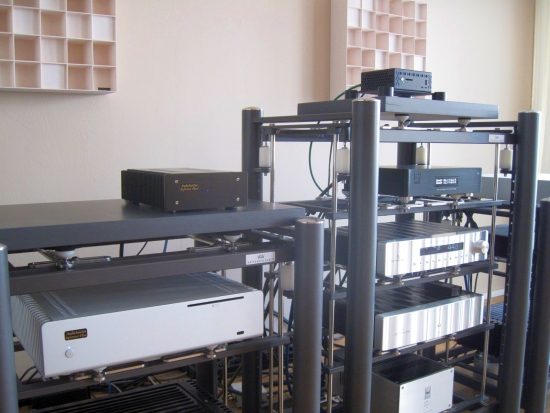
Left: AudioAanZee Reference Flow music server with Euphony SSD and a linear power supply on top.
For this review the Reference Flow music server (with Euphony SSD Drive) is put up head to head with the Buggy/Zotac (also with Euphony SSD Drive) and both will be connected to the HiFace EVO USB to SPDIF converter, connected to the Wadia 521. The interesting thing is that both servers have linear power supplies and both use the same Euphony SSD Drive. I’ve tried to create as equal circumstances as possible by using similar positions in the audio racks and the same power cables.
Given the same operating system and audio playback software one would expect pretty similar sound, right? Would you believe that the difference was actually night and day? Even with some time in between servers due to the reconnecting of USB cable and network cable, it was very clear that the AudioAanZee sounds much warmer and smoother. Now there is nothing wrong with this presentation and it can actually be a blessing especially when the rest of the system requires a warmer sounding source and this was the case in my own Magnepan setup for years. It was in this system that I always preferred the Mark Levinson 390S CD player over any other digital source, because it sounded so smooth and lush. When the AudioAanZee Reference Flow was introduced to me it was the perfect music server to use instead of that CD player. With my current Apogee setup the balance is very different and these days I long for cleaner, more dynamic sounding components. The big question is of course if this difference in character is down to the differences in power supply, computer motherboards or combined factors. I have not tried this myself but it is something that I would encourage experimenting with.
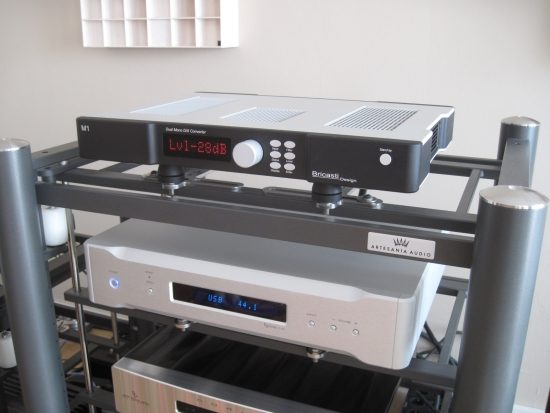
Roon RAAT endpoint via the Bricasti M1 DAC
So far all listening was done using the HiFace EVO USB/SPDIF converter, but currently also present on loan is a superb Bricasti M1 DAC, courtesy of Ohm Audio in Groningen, the Netherlands. Unlike the Wadia the Bricasti is completely up to date and so also offers a USB input. There will be a separate review describing the Bricasti M1 extensively so let me just cut to the chase: streaming Roon via RAAT with a direct USB connection to the Bricasti M1, the Buggy/Zotac sounds even better! There’s increased treble air, better definition in the midrange and an overall more refined sound, but importantly, without losing any solidity. In fact, the bass is now even more articulate and precise.
Roon RAAT endpoint via the Esoteric D-07 DAC
As I currently also have an Esoteric D-07 DAC on loan from Ohm Audio, naturally it had to be tried with the Buggy/Zotac. As with the Bricasti, the Esoteric will also get its own review, so also here I will be brief. This is quite a differerent sound than the Bricasti, darker, more compact and robust in the bass and lower midrange, and more like a classic Wadia actually (think 27 DAC or 861 CD player). Interestingly, also with the Esoteric D-07, the Buggy/Zotac sounds fantastic.
Sound – DSD files
On this topic I can be brief – as long as the files are genuine DSD files (not converted PCM) and the DAC treats the DSD files properly, and I believe that this means that they need to be treated natively, then everything mentioned about the Buggy/Zotac/P8 combination is just as true, with the addition of even better fine resolution, treble air and overall transparency.
To assess DSD quality I’ve tried three DACs using a USB2 connection: the Exogal Comet, the Matrix X-Sabre Pro and the Bricasti M1. Ranging 1700 euro to 10k, all these DACs simply work brilliantly with the Buggy/Zotac. Although the individual DAC’s characters are still recognisable, I feel that the subjective differences between these DACs are smaller playing DSD than they are playing PCM. Especially the affordable Matrix X-Sabre Pro profits enormously from the higher res format. To read more about this, see the extensive X-Sabre Pro review. The main point is that the Buggy/Zotac/P8 combination always performs its best irrespective of what DAC is used.
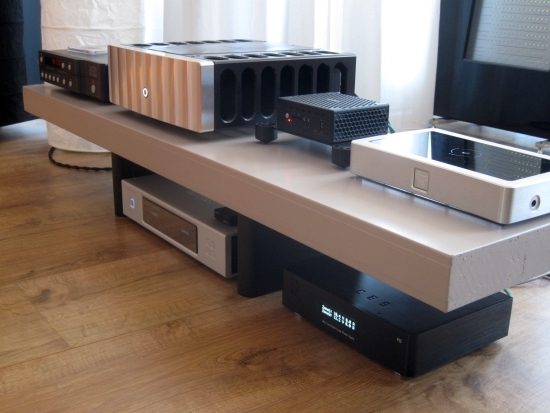
An alternate view using a Secondary Audio Setup
At the same time of this review, a pair of superlative (and superlatively expensive) Marten Mingus Quintet speakers were over for review, along with a Jeff Rowland 625 s2 amplifier. As my own setup is a little uncommon, and to further map the Buggy/Zotac’s performance I listened to it in this setup too.
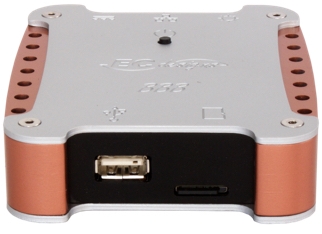
EC Designs Beaglebone Black Squeezelite streaming endpoint
Things in audio are highly relative and the more components I hear, the more and more this becomes evident. The initial streaming audio endpoint used in the Marten setup was an EC Designs Beaglebone Black (or BBB as I call it short) with a nice linear power supply. Source in this case is a Roon install running from the same regular Windows PC as used for the tests above. Roon music is streamed either via Squeezelite protocol to the BBB or via RAAT to the Buggy/Zotac.
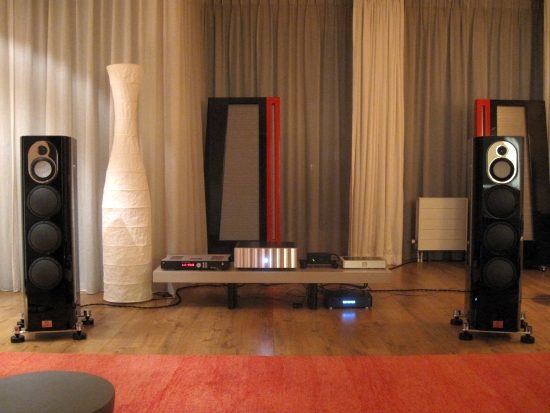
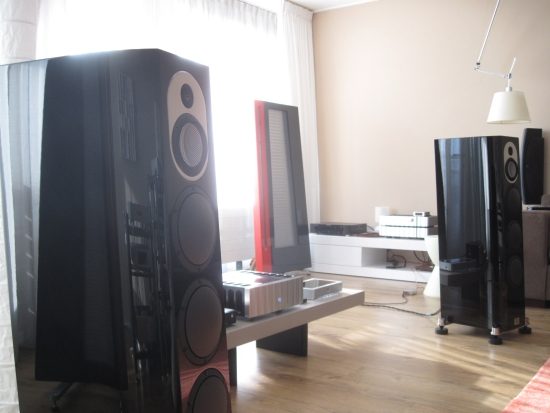
While surprisingly good at very modest cost and dynamically very expressive, the BBB sounds comparatively thin and flat, the Buggy/Zotac/P8 combination sounding tonally much fuller and having a smoother, richer presentation. So, conform what I hear in my own setup. In this setup however the Aurender surprised me by making for a still better match, mainly precisely because it sounds more slender and even-handed. As it turns out, with these already relaxed and full sounding Marten speakers, the Buggy/Zotac’s full and sonorous bottom end turned out to be a little bit too much of a good thing. As hinted at above, with two servers of obvious high quality you can’t simply state that one server is clearly better than another, because the results really depend on the other components in the audio system. That said there is no shame in the N10 being a better match in this particular system, and this doesn’t diminish the phenomenal performance of which the Buggy/Zotac/P8 combination is capable.
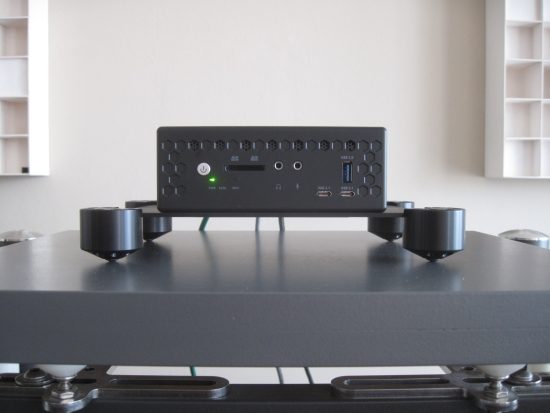
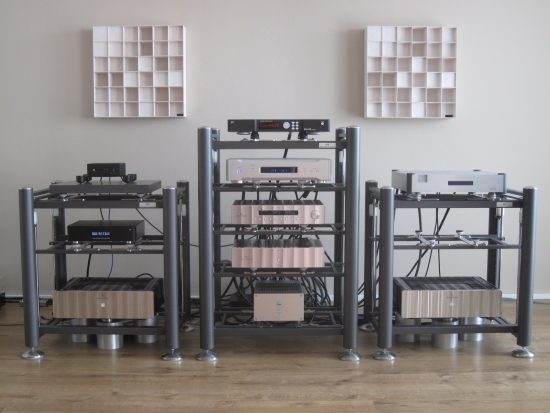
Conclusion
I would hesitate to pronounce the Buggy/Zotac/P8 combination to be better than the 5 times more expensive Aurender N10, but in my main setup the Aurender definitely does get challenged very seriously. In this context the Buggy/Zotac/P8 combination offers more articulate, and more powerful bass, along with a dynamically more enthusiastic presentation overall. For these aspects I actually prefer the Euphony combo over the Aurender. On sound quality alone the Euphony offer already seems to be super value for money but when also taking its many options into consideration (such as running Roonserver and perfect Roon streaming via RAAT) I must conclude that the Buggy/Zotac/P8 combination not only sounds brilliant but also offers tremendous value for the money.
Videos on the Hifi-Advice YouTube Channel
How Sooloos became Roon
HFA Front Page
Try out Roon for yourself
External Links
Manufacturer: Euphony-audio
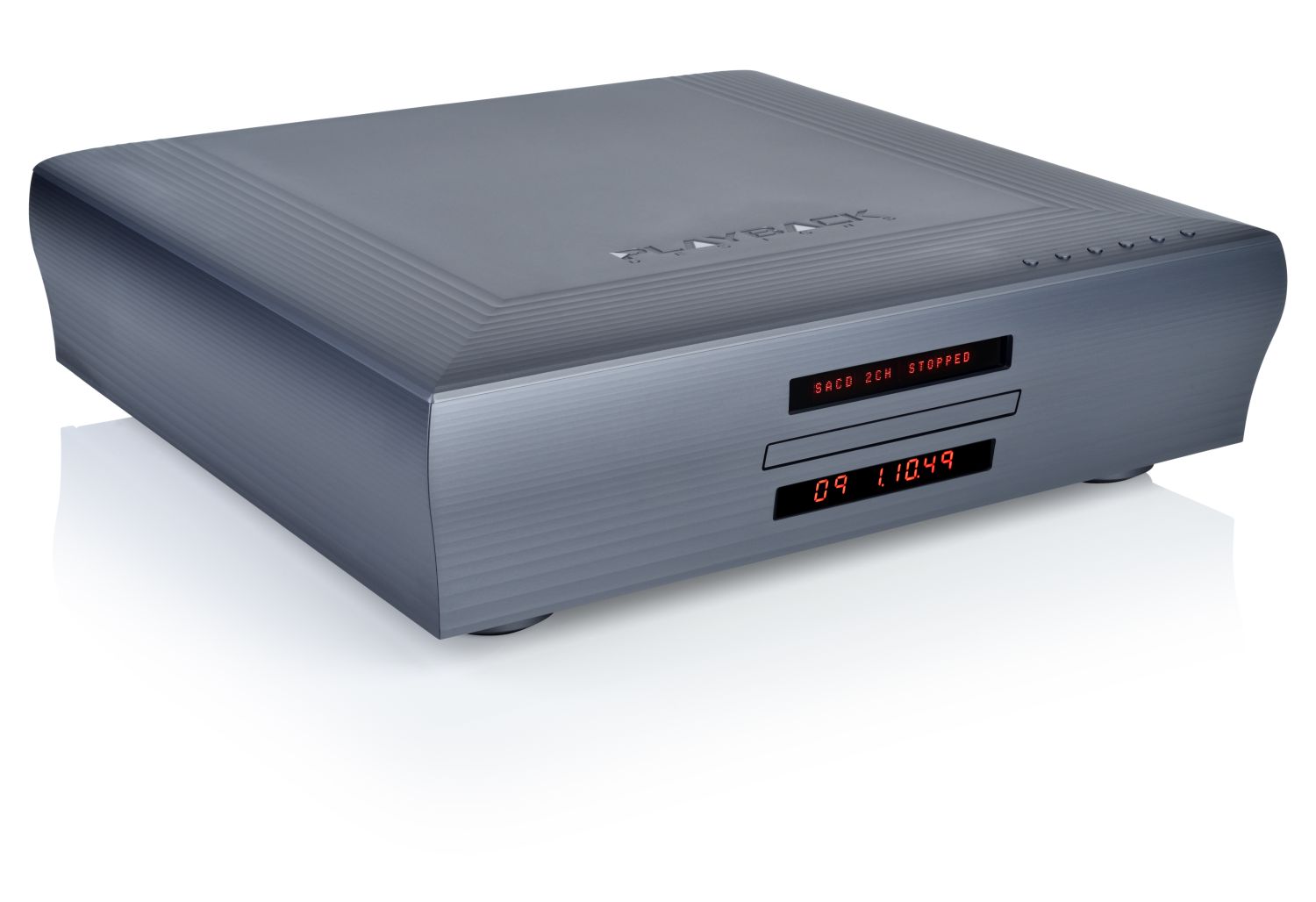







Hi Christiaan,
Thanks in advance for your thoughts regarding my questions!
I have read this review and, as always, am impressed with your attention to detail and your ability to candidly review components regardless of price. I purchased my AudioAanZee Ultra Flow in 2013 based on your thoughtful review and then purchased the Reference based on your follow up. Loved both! I recently purchased a Devialet 220 based on your observations from previous models and
just last month purchased a pair of Wilson Sabrena’s after reading your recent review. I am LOVING the sound from all three together wired with Cardas Clear. I’ve fallen in love with Roon and would like to upgrade the path to it. Your review of the Euphony and Euphony/Buggy/Zotac has left me wondering if I should keep my Reference Flow and install the Euphony SSD and software or purchase the E/B/Z. I can use the Reference Flow for a vintage tube system that I have so purchasing the E/B/Z is totally an option especially given it’s affordability. Also wondering if the power source on the Reference Flow would be effective with the E/B/Z.
Obviously your advise in this situation cant possibly take into consideration my room and the combination of all of these components but I’m hoping you can advise me from a visceral perspective as to wether any of these upgrades are even worthwhile. I love my Reference Flow and at the same time am intrigued by your findings regarding these other products.
Finally, your advise on optimal wiring and connections of these components for optimum sound and signal reliability with Roon would be greatly appreciated.
There are several of us here in the states who are eager to hear your advise as we are followers of your principled reviews and have purchased many components as a result of the trust we place on your word especially the AudioAanZee components.
Thank you!
Peter Blake
Hi Peter, it’s always nice to hear that my writing is appreciated, thanks!
There is a lot to say on the subject of Music Servers but most importantly, it is a relative matter. The Ultra Flow is nicely upbeat, fast and articulate but does not have the rich smoothness of the Reference Flow. Then again the latter is not entirely as nimble as the former. Depending on your views, one or the other could be regarded as being “better”. Adding the Euphony Drive to the Reference Flow raised the overall quality of the server, without taking away any of its richness. Do note that the OS that runs on the server also has an influence on the sound. The latest version of VortexBox that I used (2.4) sounded markedly smoother than the former version (2.3), and this makes the Euphony Drive stand out more. Anyway, it is not practical to roll back or keep using old software so please just take this as a given.
Also please note that the Euphony Drive sounds different depending on the hardware that it is used in. For example, the company’s own Buggy/Zotac sounds much more direct and ballsy, and darker, too. I know that many people crave smoothness, especially since digital has instilled many of us with a sense that it can be hard and unforgiving. The AudioAanZee servers are the antithesis of this: they sound smooth and fluid. For over a decade, I have been a fan of this kind of sound. I wanted my music smoooooth. But my musical taste is evolving and since a year or two, I am more and more favoring transparency and neutrality over warmth and am looking for an articulate and dynamic sound in particular. This is what the Buggy/Zotac does incredibly well. Together with the Antipodes servers, it ranks as one of the most dynamic and lively sounding server/endpoint that I have heard. The downside of the Buggy/Zotac, with the power supply that I used at least, is a more square-ish treble and less of a forgiving quality for lower quality recordings. The Antipodes servers were airier and more forgiving, comparatively, while remaining forceful and dynamic, but are also more on the “pure and honest” side of things than the AudioAanZee servers.
Since dynamics are my thing now, this makes the Buggy/Zotac and Antipodes servers more desirable. But as I said, this is relative, as well as personal. So, if you, like me, want maximum dynamics, then it is better to go for the Buggy/Zotac or an Antipodes server (they have some exciting new models and a review is already planned) than to retrofit the Euphony Drive in your existing server. However, if you love that smooth, relaxed and silky Reference Flow sound and want to maximize the server’s other qualities then the Euphony Drive might be just the ticket for you. You might also be interested to hear that Euphony is working on some exciting new stuff that I cannot go into just yet. If interested, Dalibor informed me that you can always approach them via the contact section on http://euphony-audio-usa.com/ where Arthur Power can answer all your questions.
Only after the Buggy/Zotac review was ready I learned that the power supply was compatible with the AudioAanZee power supply, but I did not compare them. From experience with switching other power supplies, I would assume that this is another area where meaningful tweaks can be made.
There is no such thing as optimal wiring, in my book at least. It’s a matter of finding out what is most important for you and finding matching cables. Lately, I keep everything as neutral as I can and use AudioQuest Diamond USB, Belden 19364 power cable with Oyaide C004 connectors and Cardas Clear interlinks. I still like the Hexlink Golden 5C cables for their bold and dynamic presentation but they are admittedly a little rough and colored. Please have a look at my reviews describing the sonic attributes of various USB cables, interlinks and power cords.
Hi Christiian,
Your writing is extremely appreciated and thanks for getting back to me!
My musical taste has also evolved over the last few years and, like you, I’m finding myself craving a more robust presentation at least in the digital side of my system. I do love the Ultra Flow and I’m tempted to keep it while adding another server to my system that addresses some of the different sonic characteristics that I’m craving in my new system. Given the trust I have of your ear I will wait until you have assessed the new products from Euphony before making any decisions.
As a result of the fun I’m having with Roon I’ve been looking into their Nucleus+. Hoping you might have some insight in the future regarding this product and where it can be beneficial with Euphony.
Looking forward to reading more on your site!
Best,
Peter
Hi Peter, I’ve not yet heard the Nucleus and as of yet have no plans to review it. But you just never know:-)
On another note: the Antipodes EX was received yesterday and I’ll start my assessments shortly. The review should be ready in a few weeks.
The new Euphony stuff will likely be after the Munich show.
Hi Christiaan,
As expected, you were right. I ordered the Euphony SSD and had it installed into my Reference Flow and sure enough it does sound better. Although the difference is subtle, it takes all of the strengths of the Reference Flow and enlightens them.
I’m writing today to thank you for the recommendation and also requesting some assistance in the installation to my Devialet 220 Expert. As of now it is wired up via USB and the sound is excellent. My only concern is that I have to reboot the Reference Flow every time I turn on the system and it takes a while to find the server. Is this normal? Is USB the preferred way to install the Reference Flow/Euphony to the 220 both for optimal connection and sound quality? I’m using both for Roon and not sure if the Devialet Air, Ethernet, or USB are the best way to connect. Any advise would be greatly appreciated.
Finally, I’m still looking forward to reading your reviews of the new Antipodes servers as I’m still interested in purchasing a server with a more dynamic presentation in the future.I enjoyed reading your review of the EX and waiting for the upcoming review. I still LOVE the Reference Flow and cant imagine not having it in my system. It rivals my Klimax LP12 in terms of analogue sound which says it all. It would be great to have the best of both worlds!
Best,
Peter
Hi Peter, it’s always nice to get such feedback. With my Devialet 120 I always preferred USB for its tightest sound. A friend, also with a Devialet, however, always preferred using Air for its more fluid sound. The sound of Air has changed BTW after they made the format more sturdy but as I understand, it’s still not completely stable. That’s another reason for perhaps sticking with USB. Note that AFAIK, Air cannot be installed on the Reference Flow. I always shut down the server between listening sessions as there is no benefit in leaving it on. As such, after every start, the two shook hands, and all was fine for me. If the “soundcard” disappears for you then you can also try and get it back by using an internet browser, entering myvortexbox.com, clicking the IP address and then clicking the “configure player” tab. On there you’ll find the soundcard outputs. When clicking “submit”, the server polls the available soundcards again and in doing so should find the Reference Flow’s SOtM card. The RF is indeed an exceptionally smooth sounding server. The EX has a similarly relaxed character and has better SQ overall and is indeed bolder and more dynamic, but it is also more expensive. Adding the CX supposedly brings further benefits but that’s still for me to find out once I’ve received a review sample.